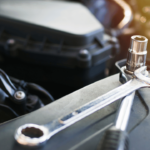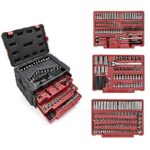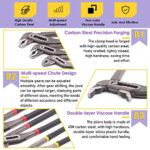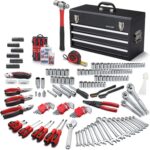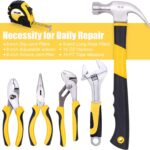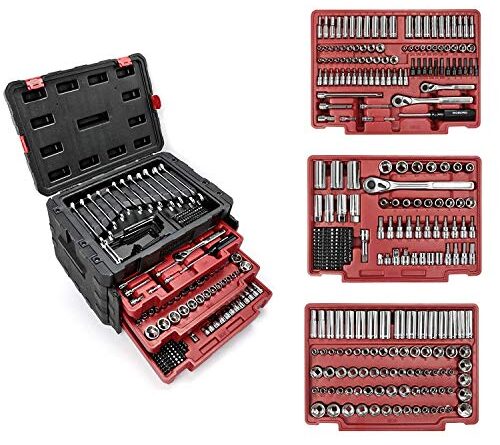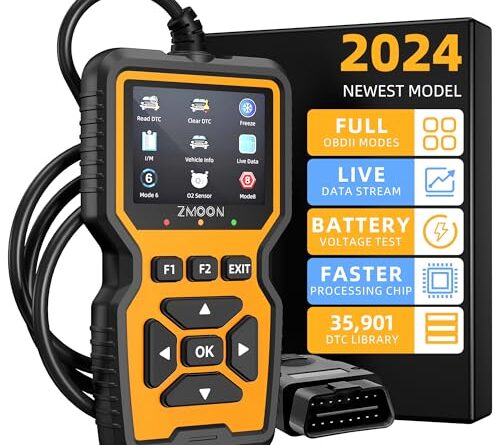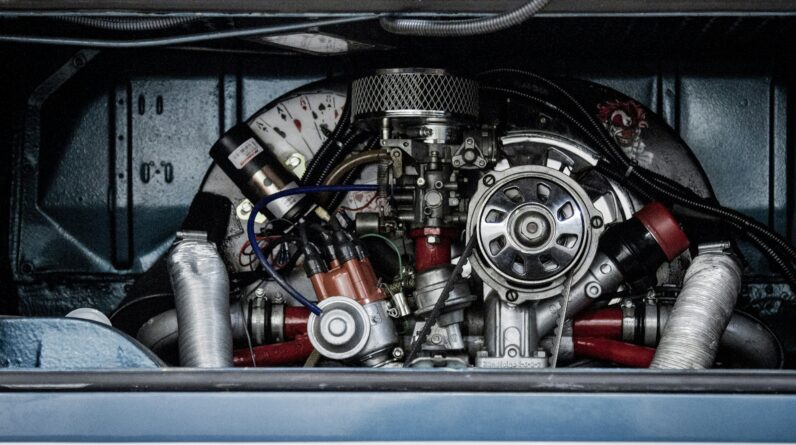
Disclaimer: This post may contain affiliate links. As an Amazon Associate, we earn from qualifying purchases.
In the world of mechanics, the unsung heroes are undoubtedly the sockets. These small but essential tools play a vital role in ensuring that your car or machinery runs smoothly. From tightening bolts to loosening nuts, mechanics rely on a variety of sockets to get the job done efficiently and effectively.
In this post, we will explore the different types of sockets that mechanics use, shedding light on the unsung heroes of the mechanical world. So, grab a seat, and let’s dive into the fascinating world of sockets!
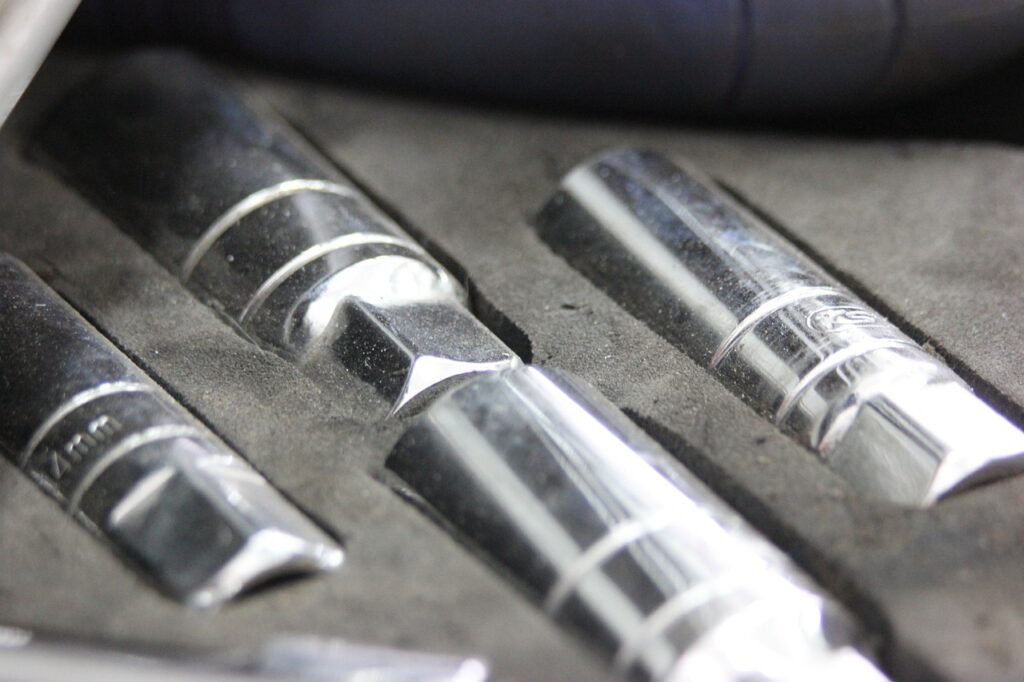
This image is property of pixabay.com.
Impact vs. Standard Sockets
Differences between impact and standard sockets
When it comes to choosing between impact sockets and standard sockets, it’s important to understand the key differences between these two types of sockets. Impact sockets are specifically designed to handle the high torque generated by power tools, such as impact wrenches.
They are made from a tougher and more durable material to withstand the excessive force produced during heavy-duty applications. On the other hand, standard sockets are suitable for use with hand tools and are not designed to withstand the same level of force as impact sockets.
When to use impact sockets
Impact sockets are the go-to choice for mechanics or DIY enthusiasts who use power tools like impact wrenches or air tools. These sockets are specifically engineered to handle high levels of torque and can easily withstand the repetitive pounding generated by these tools.
They are commonly used in automotive and industrial applications where heavy-duty nut and bolt tightening is required. Impact sockets are also ideal for removing stubborn or rusted fasteners as they are less likely to crack or shatter under extreme force.
When to use standard sockets
Standard sockets, also known as hand sockets, are primarily used with hand tools such as ratchets and breaker bars. They are designed for applications where the force required to tighten or loosen a fastener is within the limitations of manual force.
Standard sockets are commonly used in light-duty tasks, such as household repairs, furniture assembly, or general maintenance. If you’re working on smaller projects that don’t involve high levels of torque, standard sockets would be the appropriate choice.
Pros and cons of impact sockets
The main advantage of impact sockets is their ability to withstand high levels of torque and repetitive impacts from power tools. They are made from hardened materials, such as chrome-molybdenum or impact-grade steel, which provide increased strength and durability.
Impact sockets also feature thicker walls and a black oxide finish to resist corrosion and ensure a longer lifespan. However, one potential drawback of impact sockets is their higher cost compared to standard sockets. Additionally, impact sockets may not fit in tight spaces due to their larger thickness.
Pros and cons of standard sockets
Standard sockets offer several advantages for lighter applications and hand tool usage. They are usually more affordable compared to impact sockets, making them a cost-effective choice for household projects. Standard sockets are also available in a wider range of sizes and configurations, allowing for greater versatility.
However, standard sockets may not be suitable for heavy-duty tasks that require higher levels of torque. Due to their thinner walls, they can be prone to cracking or breaking when subjected to excessive force. It’s important to use standard sockets strictly within their recommended limitations.
Metric vs. SAE Sockets
Differences between metric and SAE sockets
Metric sockets and SAE sockets are designed to fit different types of fasteners, depending on the measurement system used. SAE (Society of Automotive Engineers) sockets are sized based on the imperial measurement system, while metric sockets are sized according to the metric system.
The main difference lies in the units of measurement, as SAE sockets use inches while metric sockets use millimeters.
When to use metric sockets
Metric sockets are widely used in automotive applications, especially for vehicles manufactured outside of North America. Most foreign-made cars, such as those from European or Japanese manufacturers, use metric fasteners. If you’re working on these vehicles or any other equipment that utilizes metric measurements, it is essential to use metric sockets to ensure a proper fit.
Metric sockets are available in a wide range of sizes, making them suitable for various applications.
When to use SAE sockets
SAE sockets are primarily used in North America, where the imperial measurement system is standard. These sockets are commonly found in American and domestic vehicles, as well as many household appliances and machinery.
If you’re working on older vehicles or equipment manufactured in the United States, SAE sockets are the go-to choice. It’s important to note that SAE sockets are less commonly used outside North America or in industries that predominantly follow the metric system.
Common applications for metric sockets
Metric sockets find extensive use in several industries and applications. In addition to automotive work, they are commonly used in industries such as aerospace, manufacturing, and engineering. Metric sockets are essential for tasks involving machinery or equipment sourced from countries that utilize the metric system.
From assembling furniture to repairing bicycles, metric sockets provide the necessary tools for a wide range of projects.
Common applications for SAE sockets
SAE sockets are widely used in various industries and projects. They are commonly employed in automotive repairs and maintenance, particularly for older North American vehicles. SAE sockets are also suitable for household repairs, DIY projects, and general maintenance tasks.
Whether you’re tightening bolts on a lawnmower or fixing a leaky faucet, SAE sockets are an indispensable tool for many everyday applications.
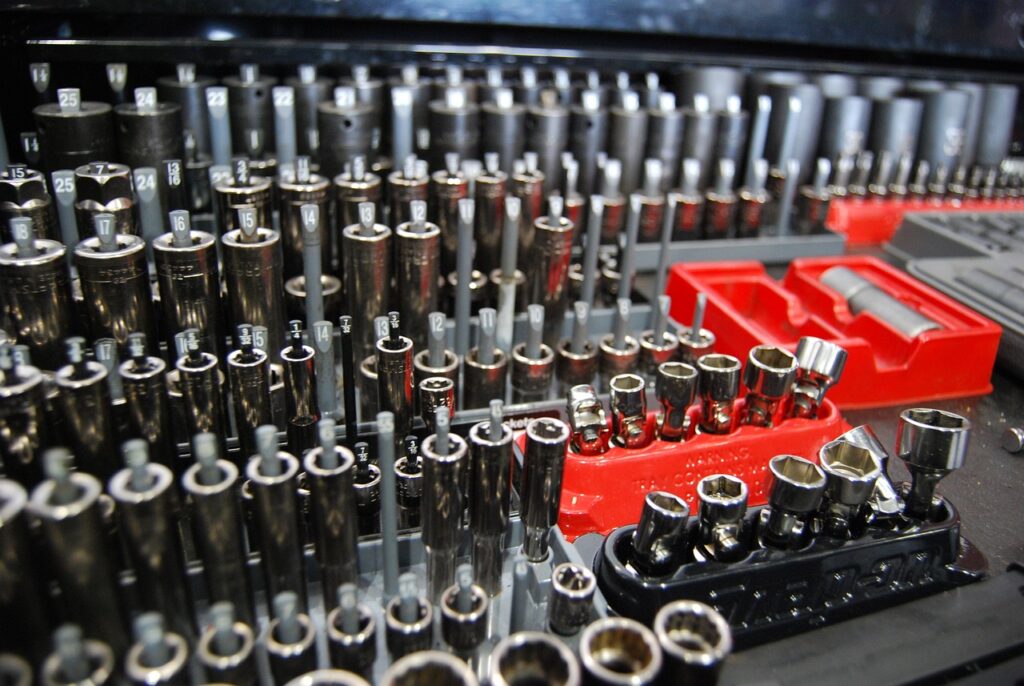
This image is property of pixabay.com.
Socket Materials
Common materials used for sockets
Different materials are utilized in the production of sockets, each offering unique benefits and characteristics. Understanding the properties of these materials can help you make an informed decision when choosing sockets for your specific needs.
Chrome vanadium
Chrome vanadium is a popular material used in socket production due to its excellent strength and durability. Sockets made from chrome vanadium are resistant to corrosion and possess high tensile strength, allowing them to withstand heavy use.
Chrome vanadium sockets are also known for their versatility and are suitable for a wide range of applications.
Chrome-molybdenum
Chrome-molybdenum, also known as chromoly, is another common material used for sockets. It is renowned for its exceptional strength, toughness, and resistance to wear. Chromoly sockets are often used in heavy-duty and high-impact applications, making them a preferred choice for automotive professionals and enthusiasts.
Impact-grade steel
Impact-grade steel is specifically designed to handle the stress and demands of power tools, such as impact wrenches. These sockets are heat-treated, making them extremely durable and resistant to breakage. Impact-grade steel sockets are essential for tasks that require high torque and repetitive impacts.
Titanium
Titanium sockets offer excellent strength and are much lighter than steel alternatives. They are highly resistant to corrosion and can withstand high temperatures without compromising their structural integrity. Titanium sockets are commonly used in aerospace and other industries where weight reduction is crucial.
Ceramic
Ceramic sockets are relatively new to the market and are gaining popularity due to their non-conductive and non-magnetic properties. They are primarily used in electrical applications where the risk of short-circuits or interference must be minimized. Ceramic sockets are known for their exceptional heat resistance.
Advantages and disadvantages of each material
Each socket material offers distinct advantages and disadvantages. Chrome vanadium and chrome-molybdenum sockets provide exceptional strength and durability, making them suitable for a wide range of applications. Impact-grade steel sockets excel in heavy-duty tasks that involve high levels of torque and repetitive impacts.
Titanium sockets are lightweight yet strong, making them ideal for applications where weight reduction is a priority. Ceramic sockets offer non-conductive properties, making them essential in electrical work. However, it’s important to consider the higher cost associated with some of these specialty materials when making a purchasing decision.
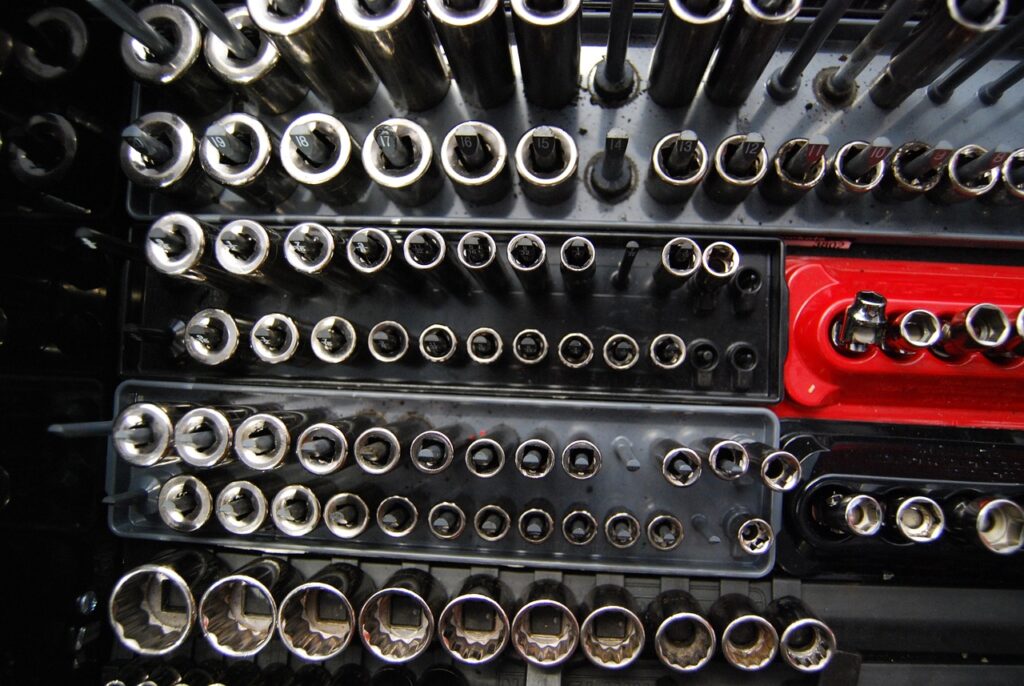
This image is property of pixabay.com.

